World Day for Cultural Diversity for Dialogue and Development

Established in 1945, the mission of the United Nations Educational, Scientific and Cultural Organization is to build peace through international cooperation, believing this to be the only way to build bridges between nations.
“Since wars begin in the minds of men and women, it is in the minds of men and women that peace must be built. UNESCO uses education, science and culture to inform, inspire and engage people everywhere to foster understanding and respect for each other and our planet.”
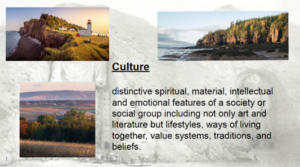
UNESCO may be better known for their global lists of tangible and intangible heritage sites, geoparks and biospheres like the Cliffs of Fundy Geopark, the Fundy biosphere, and the Landscape of Grand Pré but it also adopted a Declaration on Cultural Diversity in 2001. This declared culture as being distinctive spiritual, material, intellectual and emotional features of a society or social group including not only art and literature but lifestyles, ways of living together, value systems, traditions, and beliefs.
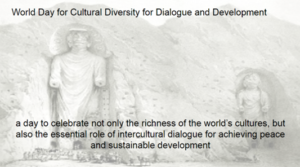
In the following year the UN General Assembly declared May 21st as World Day for Cultural Diversity for Dialogue and Development; a day to celebrate “not only the richness of the world’s cultures, but also the essential role of intercultural dialogue for achieving peace and sustainable development”. This was only a few months after the destruction of the “idolatrous” 6th-century Buddhas of Bamiyan by the Taliban in central Afghanistan.

In September 2015, the 70th UN General Assembly adopted the 2030 Agenda for Sustainable Development. Comprised of 17 Goals such as gender equality, clean energy, and responsible consumption, it is thought that these can be better achieved by “drawing upon the creative potential of the world’s diverse cultures and engaging in continuous dialogue to ensure that all members of society benefit from sustainable development”. Indeed, if creative thinking and dialogue made the problem, more creative thinking and dialogue is required to solve it, with cultural diversity its headstream.
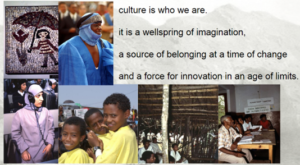
Or put another way, “culture is the prism through which we understand the world and the tool by which we shape it. It is also the path along which we open up to other people, to the great diversity of meanings and experiences. It is much more than monuments, performing arts, and books – culture is who we are. It is a wellspring of imagination, a source of belonging at a time of change and a force for innovation in an age of limits.
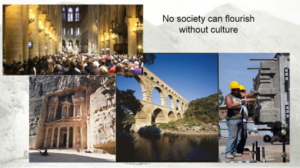
No society can flourish without culture. No development can be sustainable without it. Culture is a driver and enabler of inclusive growth – it is also a channel to forge new forms of global solidarity and citizenship.” Culture motivates and influences groups and societies, allows people to identify with or against others, and to rally in support of causes large and small.
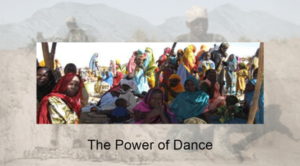
Taïgué Ahmed is a Chadian choreographer who was introduced to dance as a teenager. He was forcibly conscripted into the army at the age of 22. He used the power of dance to express the trauma he experienced in the war and believed that art “allows refugees to convert their drama and their losses into words, colours or movements – so that their plight does not overwhelm them, and destroy what is still alive”.

He wanted to provide an outlet for people to dance, to entertain, and to raise awareness so he organized a project in southern Chad. Dance was not a priority for the UN team managing the camps and providing care and food, nor was it a priority for the refugees who were distrustful and moved around the camp armed with sticks and knives. But, little by little, weapons were put away, ethnic barriers broken down, and trust established. This led to the Refugees on the Move program in 2011 which was employed in the Central African Republic, Burundi, Burkina Faso, and Mali. In one area, the refugees lived in a quasi-military organized camp that reduced violence and improved security but didn’t help to restore the part of humanism and hope that was missing. Hosting workshops on artistic development, dance, and song for both children and adults, discussions after the workshops helped to raise awareness about non-violence, early marriage, HIV prevention and hygiene.

The International Institute for Sustainable Development (IISD) sees culture as a driver and enabler of development – although an underutilized one despite the strong imagery and references made to cultural aspects by many governments. This could open up possibilities to accelerate progress across the board towards the 2030 Sustainable Development Goals.

So in recognition of World Day for Cultural Diversity for Dialogue and Development, I will look to see how culture cuts across and intersects with so many of today’s issues. It is a powerful force that people will fight to protect and one that offers us the motivation and perspective to imagine different, to imagine better, and one that can provide us the solutions that we seek.
Sources
UNESCO website https://www.unesco.org/en
UN website https://www.un.org/sustainabledevelopment/development-agenda/
CULTURE MATTERS Why culture should be at the heart of future public policy www.britishcouncil.org
IISD SDG Knowledge Hub https://sdg.iisd.org/